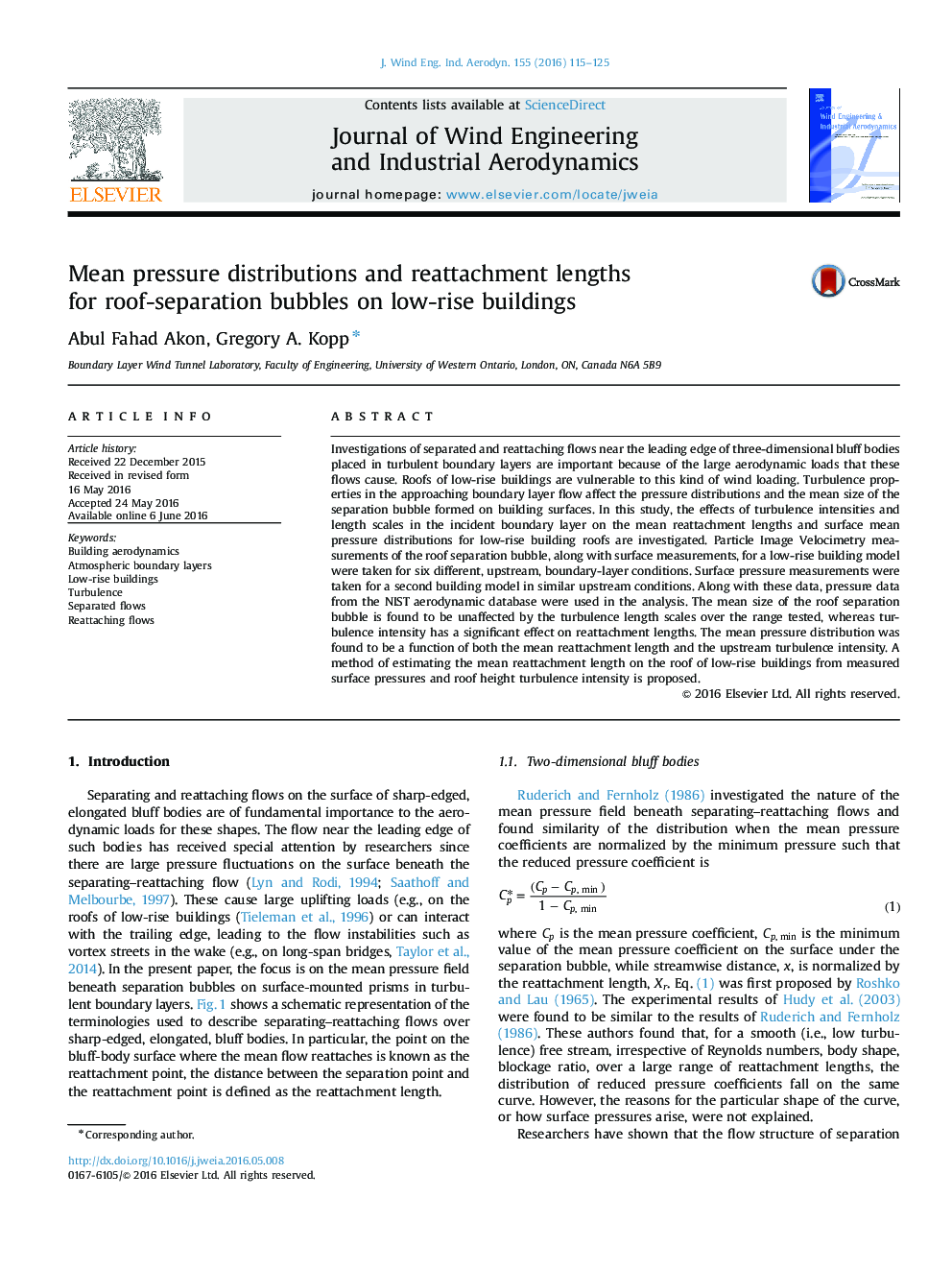| Article ID | Journal | Published Year | Pages | File Type |
|---|---|---|---|---|
| 6757303 | Journal of Wind Engineering and Industrial Aerodynamics | 2016 | 11 Pages |
Abstract
Investigations of separated and reattaching flows near the leading edge of three-dimensional bluff bodies placed in turbulent boundary layers are important because of the large aerodynamic loads that these flows cause. Roofs of low-rise buildings are vulnerable to this kind of wind loading. Turbulence properties in the approaching boundary layer flow affect the pressure distributions and the mean size of the separation bubble formed on building surfaces. In this study, the effects of turbulence intensities and length scales in the incident boundary layer on the mean reattachment lengths and surface mean pressure distributions for low-rise building roofs are investigated. Particle Image Velocimetry measurements of the roof separation bubble, along with surface measurements, for a low-rise building model were taken for six different, upstream, boundary-layer conditions. Surface pressure measurements were taken for a second building model in similar upstream conditions. Along with these data, pressure data from the NIST aerodynamic database were used in the analysis. The mean size of the roof separation bubble is found to be unaffected by the turbulence length scales over the range tested, whereas turbulence intensity has a significant effect on reattachment lengths. The mean pressure distribution was found to be a function of both the mean reattachment length and the upstream turbulence intensity. A method of estimating the mean reattachment length on the roof of low-rise buildings from measured surface pressures and roof height turbulence intensity is proposed.
Related Topics
Physical Sciences and Engineering
Energy
Renewable Energy, Sustainability and the Environment
Authors
Abul Fahad Akon, Gregory A. Kopp,
